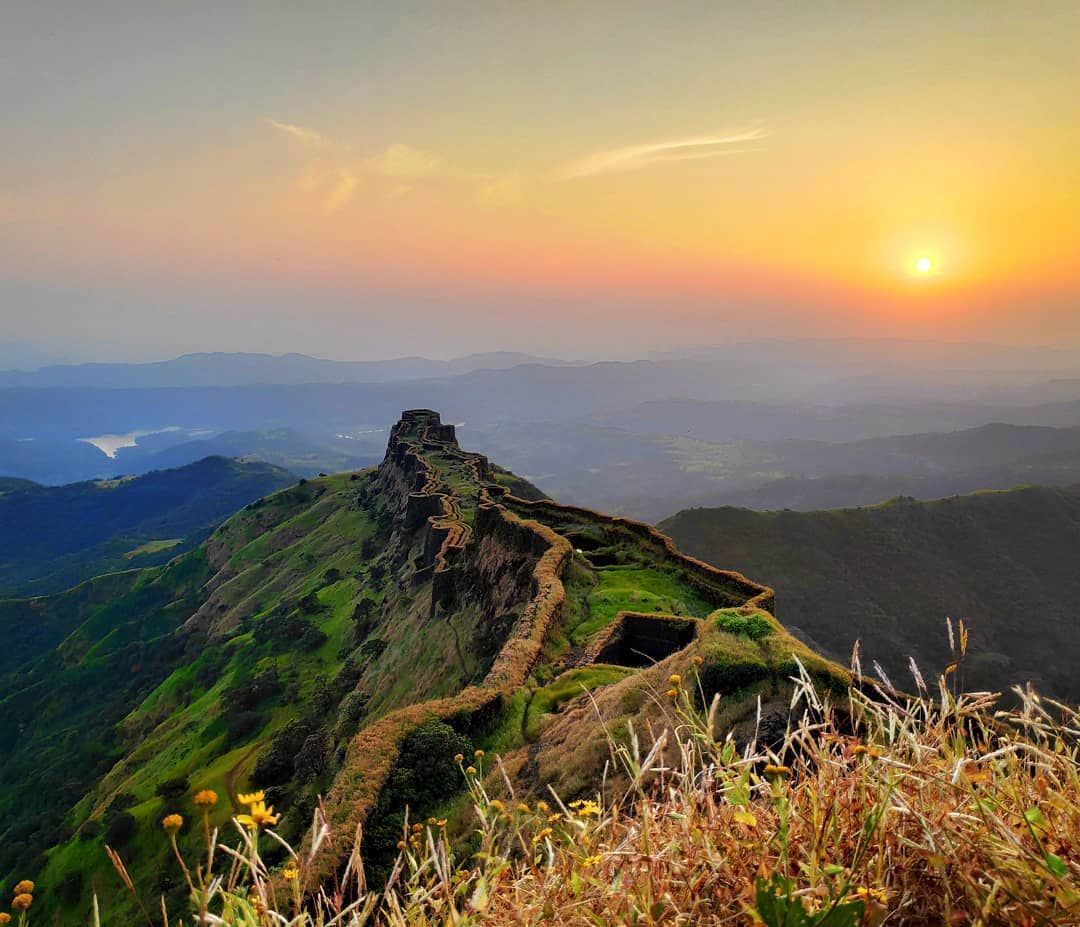Raigad Fort
Raigad Raigad, meaning the "The King's Fort', is the erstwhile capital of the warrior - Chhatrapati Shivaji Maharaj. A remote locale situated at an altitude of 869 metres above sea level, it is famed for its rich heritage, ancient monuments and rocky terrain. Raigad is a history-lover's paradise with its array of magnificent forts. Nestled in the Sahyadris, the area is renowned for its breath-taking views of natural splendour. Raigad can be distinguished from the nearby mountains by the presence of its exquisite, deep canyons. River Gandhar and River Kal flow through this beautiful valley, giving it a verdant look and making the surroundings scenic and tranquil. Raigad is also famed for its varied and rich cultural heritage. Folk arts like Keertan, Koli Dance, Bhajan and Bharud have originated here and are still practiced by the locals.
High up on the hill of Raigad where the strong winds buffet you and the valleys around mesmerize you with their scenic splendour is the fort of Chhatrapati Shivaji Maharaj, the great king of the Maratha Empire. This was the capital during his rule, also important for the fact that his coronation took place here on June 6, 1674. It was also here that he breathed his last. The fort today is a favourite tourist destination, also popular with avid trekkers because of its difficult terrain.
Raigad is situated in the taluka of Mahad and the fort rises 820 meters above sea level. As historical records show, the fort was known by different names at different times, including Tanas, Rasivata, Nandadeep and Rayari. It was initially under the control of Chandrarao More of Jawali and captured by Chhatrapati Shivaji Maharaj when he defeated More in a fierce battle in 1656 CE, following which he re-named it Raigad. It was around this time that the boundaries of the Maratha Empire i.e. Swarajya were expanding and Shivaji felt the need to shift the capital from Rajgad. He therefore set his sights on Raigad, a fort he liked because of its steepness and a rather peculiar structure which would dissuade his enemies or make it too difficult for them to attack it.
Shivaji Maharaj then deployed Hiroji Indulkar, an architect and engineer, to carry out the necessary modifications as well as add new structures to accommodate his army. The wonderful bastions, ramparts, wells, water reservoirs, residences both for commoners and dignitaries, gardens, pathways, pillars, and the palatial structures for the king and his family thus came into being. Some of the other attractions of the fort were the big temple of Wadeshwar (also known as Jagadishwar), other smaller temples, Mahadarwaja, huge storage rooms for food grains, Ratnashala, Nagar Peth that consisted of 43 structures in a row, and much more.
Hiroji also carved a stone inscription near the Wadeshwar Temple and listed there the things that had been constructed on the fort. This inscription is in Sanskrit and Devnagari script. But while these were all man-made structures, Raigad also offered one of the most ‘natural’ protections through its Bhavani Tok and Takmak Tok with vertigo-inducing drops of 400 meters on both sides. The cave at the bottom, called Vaghbil, has a direct connection with the Palaeolithic period, established from the findings of the stone tools belonging to that era.
